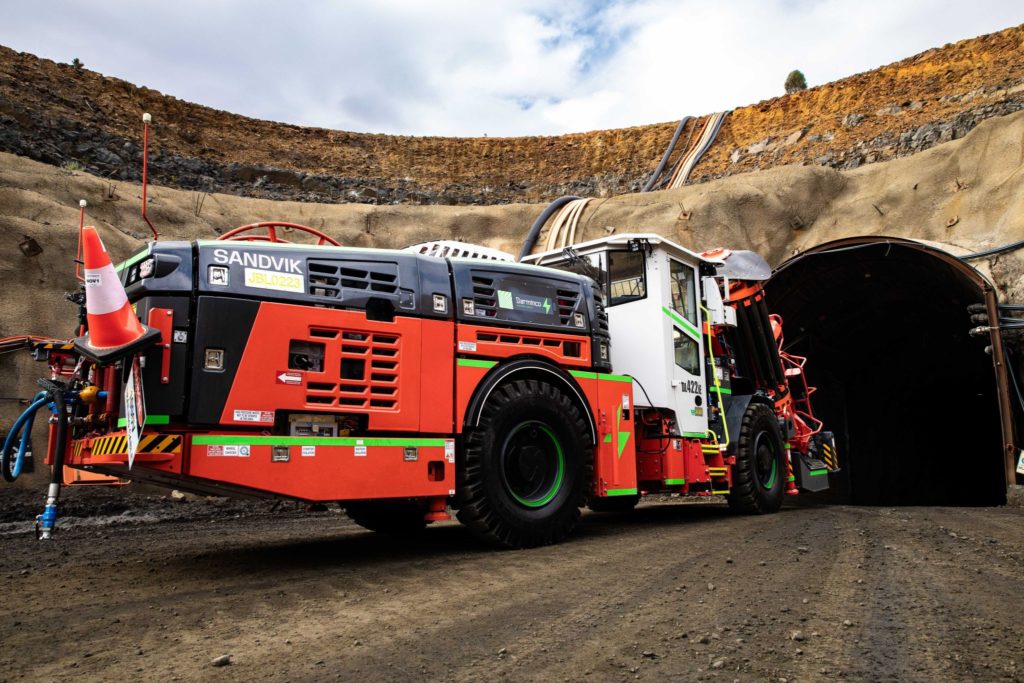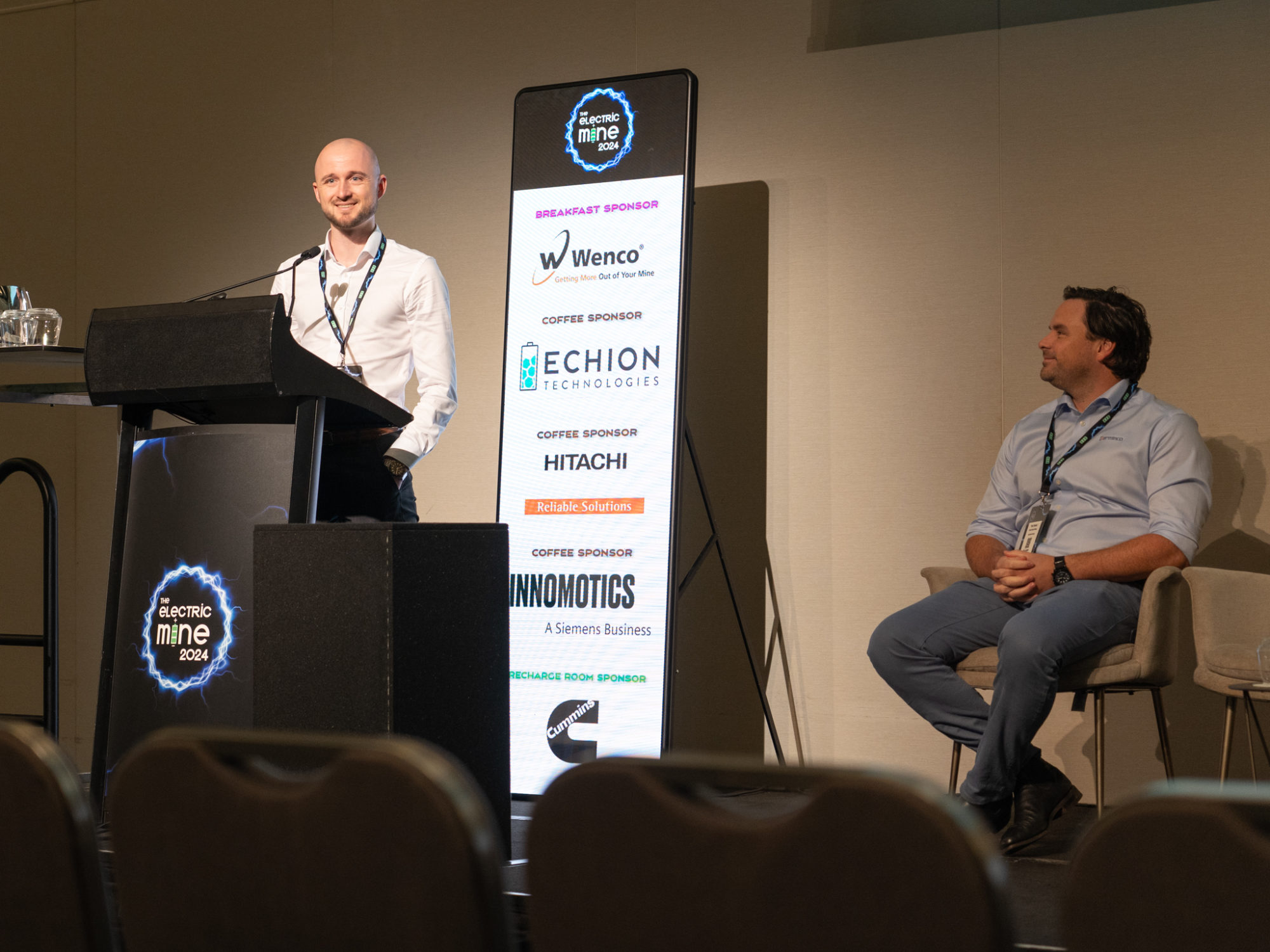The confluence of automation and electrification in underground mining was spoken of many times at The Electric Mine 2024 event, in Perth, Western Australia, last month, with a whole themed session dedicated to it.
One of the best examples of the two trends converging was observed in a talk titled, ‘Electrification and Automation at IGO’s Nova Mine: Implementation of the Sandvik DL422iE Production Drill.’
In this joint presentation, Brandon Cooper, Senior Mining Engineer of Projects at IGO Limited, and Paul Linabury, Manager of Electrification at Perenti Contract Mining, outlined how this new electric and automated longhole drill could provide the entry point underground miners require to understand the practicalities associated with incorporating such new technology.
“This isn’t the heavy hitter for greenhouse gas or DPM (diesel particulate matter), but what it does is allow us to operate a battery underground and get familiar with it,” Cooper said of the Australia-first DL422iE deployment at Nova.
The Sandvik DL422iE is a fully-automated, battery-powered top hammer longhole drill designed for underground mass mining in 4 x 4 m or larger production drifts, Sandvik says. It can drill vertical and inclined fans and single or parallel Ø89-127 mm longholes up to 54 m in depth using ST58 and ST68 tube rods.
The drill’s electric driveline includes a battery package and electric motor to allow for zero emissions while tramming and also reduced thermal load. The DL422iE also features Sandvik’s patented Charging While Drilling technology; an innovation for reduced battery charging time without the need for additional infrastructure.
Barminco, part of Perenti, purchased the Sandvik DL422iE, which was commissioned and put to work at Nova in July 2023 as part of Barminco’s existing services contract, with the surface drilling remote capacities operationalised in February of this year.
Nova, itself, is a remote operation in the Fraser Range of Western Australia that has traditionally relied on large diesel generators for power. The company has progressively transitioned to renewable generation, which has been reinforced by a 10 MWh lithium-ion battery. These two, alongside the site’s synchronous condensers, allow Nova to produce enough renewable energy to power the production plant and underground mine when the sun is shining, according to Cooper.
This is important for the context of introducing an electric drill to the fleet that is powered off a 75 kWh sodium nickel chloride battery when tramming and the mine grid – via cable – when drilling.
While the electric drill introduction represented an Australia first, Nova has been trialling and deploying battery-electric equipment for several years. It has three Zed 70 Ti light utility vehicles (battery-electric conversions of Toyota Landcruisers) in its fleet from Zero Automotive, has trialled the Bortana EV – another electric light vehicle – has one BME ITC L120H battery-electric integrated tool carrier to its name and is expecting to add another machine to its fleet by the end of the year – a Normet Charmec MC 605 V(E) SD battery-electric emulsion charge rig.
This breadth and depth of experience allowed Cooper to look across the industry’s underground mine electrification equipment offering and draw some parallels at the event.
“Introducing a battery-electric drill has, at this stage, a lot more chance of being seamless and successful with far less operational changes needed to be made compared with a truck or a loader,” he said.
The proof of this statement was in the presentation, and some of the specific operational highlights he and Linabury outlined.
From initial deployment in July 2023 to the middle of May 2024, IGO had drilled 50,750 m with this rig, with Cooper saying the site typically drills longholes to 45 m lengths. When compared with the diesel-powered DL421 rig the operation was previously using, the DL422iE was 20% more productive than the DL421 rig’s 12-month average drilling rate of 5,000 m/mth.
Looking at the automated elements on board the Sandvik rig – the first battery-electric vehicle equipped with Sandvik AutoMine® for surface remote drilling and automation – Cooper highlighted higher metres drilled, reduced hole setup times and increased flexibility.

He provided some colour here: “Auto fan drilling enables the drill and blast engineer to put a drill design on a USB stick and give it to the operator, where the operator plugs it into the rig’s USB port to view a digital map of what they’re drilling. The rig itself will automatically test each planned collar location and alert the operator if a hole needs to move; allowing them to shift the collar and leave the toe in place, or shift and drill a parallel hole.” These amendments to the original plan are recorded, with the engineer able to analyse the information on the updated file later.
Following this process, the rig can be setup to drill an entire fan without any operator input.
The second automation advance Cooper highlighted was the ability to carry out drilling from the surface in a cab. The company has been using this facility to drill during shift change or during re-entry. “That feature is netting us 770 m on top of what we have been getting every month,” Cooper said. “And I don’t think we are taking full advantage of it just yet; I think there are more gains to be had.”
While the machine is meant for battery-electric tramming, Cooper said there had been glimpses of the rig’s ability to also drill off battery, relaying one occasion where an electrician was able to repair a “jumbo box” at the same time as the operator carried out a 25 m long hole using battery power.
The battery-electric rig has also required some changes to the way operators work, with Cooper noting that the 75 kWh sodium nickel chloride battery did not provide enough power for the machine to tram 3.3 km (on a 1:7 incline) from the bottom of the ramp to the top. Nova operators had got around this issue by carrying out an opportunity charge 850 m from surface by the rod-storage cuddy, allowing the operator to offload drill rods at the same time.
“These BEVs require changes to the way we work,” he said. “If we can integrate those changes into our existing work practices to minimise the changes to the operators, we will get a better result.”
Linabury, meanwhile, highlighted how the services provider was identifying the new risks and opportunities that were emerging from battery electrification during deployments such as this.
Examples included recognising the increased number of electrical isolation points on a battery-electric drill and creating a live line indicator to identify when current is running through these, charging the battery to below full capacity to make the most of downhill regeneration and more closely interrogating classifications given by systems such as the battery management interface.
In the Q&A session at the end of the presentation, Cooper summed up the IGO rationale for bringing this new battery-electric and automation-enabled machine into the Nova fleet: “As we have shown with the DL422iE, you can essentially drop this in and change very little about the way you operate normally, but at the same time you get a chance to play around with: ‘What does my emergency response look like for this new drill? How do my supply chains have to change for parts? How do my skillsets need to change for people? What do the operators need to be made aware of?’
“You can solve all of those problems, and a lot of those learnings are then directly transferable for when you start tackling the bigger problems of heavy machines.”
Such learnings would allow the company to have a much clearer picture of what it would take to fully electrify an underground mine in the future, he concluded.











